Roots of Reflection: An Oak Tree’s Wisdom
I am sitting on my couch with Solfeggio frequencies playing, thinking of my oak tree. There, upon its wide fallen trunk and amidst its sprawling branches that formed a natural fort, I had spent countless hours as a child, scribbling fragments of poetry and thoughts in a weathered notebook, rain pattering softly around me. The oak tree was more than a tree; it was a companion, a keeper of secrets, and a silent witness to the musings of my young mind. Even now, I wonder if Carl Jung, in his quiet reflections and dreams, ever sat with such a tree. Did he too ponder the correlation between life’s seasons and the self’s eternal quest for meaning? In his Memories, Dreams, Reflections, Jung speaks of the enduring symbols of the psyche, and I cannot help but see my oak tree as such a symbol—rooted, weathered, and enduring.
My childhood home was nestled in a rural neighborhood about ten miles outside a small Iowa town. To reach it, one had to traverse three distinct hills, each a milestone on the journey home. Those hills held their own stories, as we climbed and descended them daily to school, our laughter and grumbles echoing in the early morning air. On my last visit back, I was struck by how much had changed. Houses now stood where meadows once stretched, and the small, shed-like bus house—a refuge from the biting winter winds—was long gone. How often we had huddled there, hair frozen stiff in the frigid air, united in our shared hope for the bus’s arrival. The weight of nostalgia settled on me like a soft but persistent fog as I neared my childhood driveway.
The driveway stretched wide and welcoming, a testament to my father’s hard work. He had it poured so we could roller-skate and play basketball, creating a canvas for our childhood adventures. Today, the forest that had once enveloped our home has receded, giving way to new houses. Yet, at the edge of the yard, the forest line still stands, a reminder of what once was.
It is curious how memories intertwine with emotion, flooding back with a potency that defies explanation. As I sit on my couch, thinking of the forest, my mind drifts to the oak tree that had anchored my childhood. The tree had been struck by lightning long before my time, its trunk split and weathered, yet alive in its resilience. A narrow trail led to it, and there I would sit, letting the earthy scent of moss and rain fill my senses. Even now, I can recall the fragrance of the moss that clung to its bark, a perfume of ancient wisdom. Beneath that tree, with the rain as my muse, I would write—poems, thoughts, fragments of a child’s burgeoning understanding of the world.
In those moments, I felt connected to something timeless. The crackling of paper dried from rain became a cherished sound, the texture of dampened pages a tactile reminder of creativity born amidst nature’s embrace. I wonder now if this peculiar nostalgia stems from another life, or if it simply arises from the purity of an untouched inner child—that part of the soul untainted by life’s inevitable hurts. Jung wrote of the inner child as a source of renewal, a reminder of the self’s authentic essence. In those rainy hours beneath the oak tree, I met my inner child, unfiltered and unafraid.
Returning to that place as an adult, I see how it shaped me. Writing in the rain was not merely an act of creativity but a ritual of connection—to nature, to myself, and perhaps to something greater. This past summer, I visited Equus in Santa Fe, and when it was our time to spend with the herd, the heavens opened up and rain began to pour. We spent a magical and timeless moment with the horses, rain soaking us completely. It didn’t matter that we were cold; the moment was shamanic in its power, connecting us deeply to the earth and each other. Afterward, our journals were sopping wet, and even now, I glance at the dry, crackly pages on my bookshelf as a reminder of that experience. That moment brought me back to my childhood, to the rain-soaked hours spent with my oak tree. That oak tree, struck down and yet enduring, mirrors the human spirit’s resilience. It is a symbol, as Jung might say, of the psyche’s capacity to transform adversity into growth. My writing, then and now, is a testament to that transformation, a means of understanding the world and my place within it.
As I sit on my couch, reflecting on these memories, I feel the weight of time and the persistence of memory pressing gently but insistently upon me. I glance at my bookshelf and see Carl Jung's Memories, Dreams, Reflections resting on my bookshelf. I wonder if I should read it once more to explore how his reflections might illuminate my own. I also find myself wondering if I will return to Iowa again—a place where my roots remain, though my family has moved away, and one of my closest friends has passed on. There may be nothing left for me there, yet it is undeniably a part of me.
Perhaps the oak tree’s lesson is not merely one of resilience but also of presence. It whispers that while the past shapes us, we live in this moment. As I sit here now, I ask myself and my readers: What talismans from your past still whisper to you, calling you to reflect, to grow, and to remain rooted in your authentic self?



